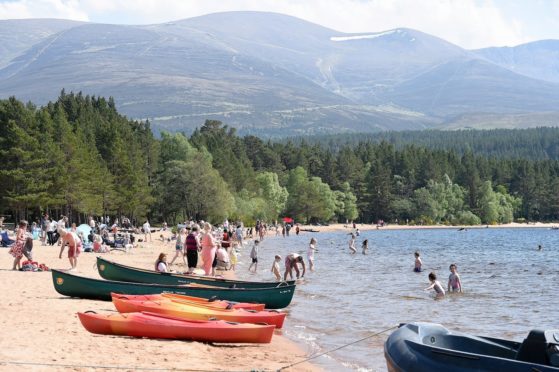Scotland has traditionally been regarded as a country inhabited by God’s frozen people.
But now, university researchers have revealed that Scots should get ready for warmer summers and more heatwaves in the future.
A new study has confirmed that dry, hot summers – similar to the one experienced in 2018 – are expected to become the norm and the country should prepare accordingly.
Analysis of UK climate projections by university researchers and Met Office staff has suggested there will be a substantial increase in the likelihood of temperatures reaching 2018’s levels on a regular basis between now and 2050.
Scientists also say there is the possibility that, towards the end of the century, every summer will be as hot as that of two years ago, unless substantial cuts in greenhouse gas emissions are made.
Conditions in summer 2018 were, for Scotland, unusually hot with a high of 31.9C recorded at Bishopton in Renfrewshire. Temperatures of 27 and 28 degrees were also gauged at places such as Loch Morlich and Braemar in the north and north-east.
Researchers at the universities of Edinburgh and Oxford, and the Met Office, have concluded that the country should start planning now to deal with more frequent higher temperatures, brought about as a result of climate change.
Lead researcher Professor Simon Tett, of Edinburgh University’s school of Geosciences, said: “Despite its cool climate, Scotland must start to prepare now for the impact of high-temperature extremes.
“The bottom line is that heatwaves have become more likely because of human-induced climate change.”
The team made its forecasts using a new generation of climate models. Each model is based on mathematical depictions of the physics, chemistry and biology of the atmosphere, land and sea.
The scientists also account for the effects of human activity – past, present and predicted future – to build a clearer picture of long-term changes in climate and understand how humanity has changed the risk of such events.
Researchers say their analysis had demonstrated a pressing need for sustainable long-term planning.
Costly special measures were implemented to deal with the adverse effects of the 2018 heatwave, which had most impact on rural areas, transport systems and water infrastructure.
The Edinburgh team interviewed a range of people working for organisations that dealt with the impact of the heatwave. They concluded that Scotland had been largely able to cope with the hot weather, but with some difficulty.
Many interviewees, however, said that dealing with such heatwaves in successive years would have been very challenging, particularly given the substantial costs required.
The study, funded by ClimateXchange, is published online by IOPscience here:
https://edin.ac/2RA2abK










